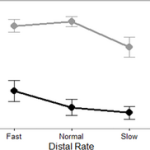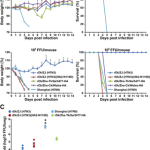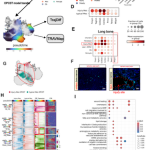Study design
This prospective, multicenter, national observational study was conducted in Brazil, enrolling 258 diabetic patients and 51 healthy individuals. Two centers were selected based on the profiles of the required patients and the availability of equipment for conducting the exams. In compliance with the Helsinki Declaration [16], the study obtained approval for data collection and analysis from the domain-specific institutional review boards of all participating hospitals. The primary aim was to enhance the clinical care of diabetic patients through early and noninvasive identification of plasma ceramides correlated with microvascular dysfunction. Prior to participation, all individuals provided signed informed consent. The HCOR Research Institute oversaw centralized data collection and site monitoring to ensure protocol compliance.
Study population
From 2018 to 2022, 258 diabetic patients eligible for retinography, stress cardiovascular magnetic resonance (CMR), and blood collection were prospectively recruited. An additional 51 participants comprised the healthy control group (Group 1), undergoing echocardiogram assessments to evaluate heart function instead of stress CMR.
Diabetic patients were stratified based on their acute myocardial infarction (AMI) status: 150 patients without AMI comprised Group 2, while 108 patients with AMI formed Group 3. All Group 3 patients underwent coronary angiography as part of their acute coronary syndrome (ACS) treatment regimen. All patients were fully revascularized with obstructive lesions excluded via angiography and/or Fractional Flow Reserve assessments. Additionally, microvascular resistance was assessed using coronary flow reserve (CFR). Within Group 3, 50 patients underwent triplicate blood collection at intervals of 24 h, 1 month, and 6 months post-AMI for longitudinal kinetic analysis, resulting in the exclusion of two patients lacking triplicate blood samples. Figure 1 outlines the study workflow. Recruitment strategies varied: Groups 1 and 2 participants were sourced from online communities or personal networks, whereas Group 3 individuals were enrolled during the hospitalization phase for acute AMI care.
The inclusion criteria for this study required participants to be over 21 years old, diagnosed with type 1 or 2 diabetes according to the American Diabetes Association (ADA) criteria [17] (for Groups 2 and 3), and have experienced an AMI as per the Fourth AMI Universal definition [18] (Group 3). Group 1 members were required to have normal-range laboratory results from a comprehensive set of tests, including an echocardiogram and retinography. Importantly, they remained free of illnesses throughout the six-month follow-up, thereby preventing the need for CMR due to its futility.
Exclusion criteria included active cancer, glaucoma, prior stroke, severe renal impairment (eGFR < 30 ml/m), uncontrolled hypertension (systolic blood pressure ≥ 160 mmHg and/or diastolic blood pressure ≥ 90 mmHg), uncontrolled dyslipidemia (LDL > 150 mg/dL despite ongoing treatment), or an inability to undergo retinography or stress CMR.
Clinical and laboratory data
Clinical and laboratory data were categorized into various domains, including clinical history, socioeconomic factors, physical examinations, comorbidities, current medications, and treatment adherence. The Morisky Medication Adherence Scale (MMAS) Questionnaire [19] was employed as a tool to evaluate patient adherence to prescribed drug treatment. The test comprises a four-question questionnaire designed to gauge patients’ consistency in adhering to prescribed medication, with responses gathered during face-to-face medical interviews.
The cohort was analyzed based on four outcomes to assess patients across different spectrums of disease progression: non-diabetic and diabetic patients with and without microvascular and macrovascular disease. However, only patients able to perform CMR, retinography, or both were incorporated into the outcome analysis. Some patients were precluded from undergoing these tests due to conditions such as claustrophobia or pandemic-related restrictions.
Study procedures
Stress-induced myocardial ischemia (SIMI) was assessed using cardiovascular magnetic resonance imaging (CMR) on a 1.5T scanner (GE 450). The CMR examination was conducted on 114 patients from Group 2 and 45 patients from Group 3 following a standard protocol. This protocol included the acquisition of LV short and long-axis cine images (using a steady-state free precession – SSFP sequence) and late gadolinium enhancement.
First-pass myocardial perfusion was captured in the LV short-axis plane, obtained two to three minutes after pharmacological stress using dipyridamole at 0.56mg.kg−1 injected over four minutes. A single dose of 0.05 mM.kg−1 of a nonionic, low-osmolar Gd-based contrast agent was then injected into the antecubital vein using a power injector at a rate of 5mL.s−1, followed by a 20mL saline flush. Immediately after the stress perfusion image sequence, aminophylline was administered intravenously. The heart was divided into 17 segments for myocardium perfusion assessment [20], which was determined not only in the injected ischemic segment but also in non-injected myocardial segments; each segment was scored as presenting normal perfusion (0), mild [1], moderate [2], or severe [3] perfusion defect. Coronary flow reserve velocity is a reliable measure of coronary microvascular function in the absence of any epicardial flow limitation, and cutoff values ≤ 2.5 are commonly used as indicative of impaired coronary microvascular function [20].
Acquisition of phase contrast cine CMR data from the coronary sinus
All CMR exams were analyzed using a dedicated CMR-TT software (CVi42 5.13.5, Circle Cardiovascular Imaging Calgary, Canada), which allows flow 2D parameter analysis based on phase contrast cine images to quantify blood flow in the coronary sinus.
The imaging plane for the acquisition of coronary sinus flow was adjusted to be perpendicular to the coronary sinus at a specific distance from its ostium on axial cine CMR images [21].
The contours of the coronary sinus were manually traced, phase by phase, throughout the entire cardiac cycle. Subsequently, a phase-offset correction for the method of static tissue mask in background correction was performed using the CVi42 software. Blood flow in the coronary sinus was calculated by integrating the product of the cross-sectional area and mean velocity in the coronary sinus, then corrected using mean velocity in the adjacent tissue for all cardiac phases in the cardiac cycle. Myocardial blood flow (MBF) was calculated as follows:
$$\mathrm{MBF}\;(\mathrm{ml}/\min/\mathrm g)\:=\:\mathrm{coronary}\;\mathrm{sinus}\;\mathrm{flow}\;(\mathrm{ml}/\min)/\;\mathrm{LV}\;\mathrm{mass}\;(\mathrm g)$$
Resting MBF correlates linearly with the rate pressure product at rest, but hyperemic MBF does not correlate linearly with the rate pressure product [22]. Therefore, we corrected the resting MBF by resting rate pressure product at rest from each subject using the following formulas (MBF during infusion dipyridamole was not corrected by rate pressure product during stress) [21].
$$\mathrm{Corrected}\;\mathrm{MBF}\;\mathrm{at}\;\mathrm{rest}\;(\mathrm{ml}/\min/\mathrm g/)\:=\:\mathrm{MBF}\;\mathrm{at}\;\mathrm{rest}\;(\mathrm{ml}/\min/\mathrm g)\;/\;\mathrm{rate}\;\mathrm{pressure}\;\mathrm{product}\;\mathrm{at}\;\mathrm{rest}\;(\mathrm{mm}\;\mathrm{Hg}/\mathrm{mim})\;\mathrm x\;7,500$$
$$\mathrm{Rate}\;\mathrm{pressure}\;\mathrm{at}\;\mathrm{rest}\;(\mathrm{mm}\;\mathrm{Hg}/\min)\:=\:\mathrm{systolic}\;\mathrm{blood}\;\mathrm{pressure}\;\mathrm{at}\;\mathrm{rest}\;(\mathrm{mm}\;\mathrm{Hg})\;\mathrm x\;\mathrm{heart}\;\mathrm{rate}\;\mathrm{at}\;\mathrm{rest}\;(\mathrm{beats}/\min)$$
The average rate pressure product at rest was 7,500 from healthy controls with a mean age of 50.1 ± 9.7 years, as reported in a previous study [22, 23].
Δ MBF and coronary flow reserve (CFR) were calculated as:
$$\mathrm\Delta\;\mathrm{MBF}\;(\mathrm{ml}/\min/\mathrm g)\:=\:\mathrm{MBF}\;\mathrm{during}\;\mathrm{infusion}\;\mathrm{dipyridamole}\;(\mathrm{ml}/\min/\mathrm g)\;-\;\mathrm{corrected}\;\mathrm{MBF}\;\mathrm{at}\;\mathrm{rest}\;(\mathrm{ml}/\min/\mathrm g)$$
Sample preparation and Mass Spectroscopy (MS) analysis
Analytes were extracted from plasma by adding a solution composed of ethanol containing 0.1% ammonium hydroxide (v/v) and deuterated internal standards followed by sonication and agitation. For MS analysis, the Transcend TLX-4 system was utilized, which consisted of four Dionex UltiMate 3000 quaternary pumps, four Dionex UltiMate 3000 binary pumps, one VIM, and one CTC PAL autosampler. The system was coupled to a TSQ Altis Triple Quadrupole Mass Spectrometer with a heated-electrospray ionization (HESI) source from Thermo Fisher Scientific, San Jose, CA, USA. Two TurboFlow Cyclone-C8 XL 0.5 × 50 mm columns and two Accucore C30 50 × 2.1 mm columns from Thermo Fisher Scientific were used in the TLX-4 system.
For the first dimension (TurboFlow chromatography), the mobile phase A consisted of water with 0.1% formic acid, mobile phase B was ethanol, and mobile phase C was acetonitrile/isopropanol/acetone (40:40:20, v/v). For the second dimension, mobile phase A was H2O/acetonitrile/methanol/formic acid (56:14:30:0.1, v/v), and mobile phase B was isopropanol/acetonitrile/formic acid (90:10:0.1, v/v). The extracts were injected into the system, and detection was achieved by monitoring protonated precursor ions and their respective fragments (264.27 for ceramides, 266.28 for dihydroceramide, 271.31 for ceramides-d7, and [M + H-H2O] + for qualifier transitions of ceramides and dihydroceramide).
Statistical analysis
The data were expressed as mean ± SD for continuous variables that were normally distributed or median (range) for skewed data. Percentages were presented for categorical variables. Comparisons among group variables were performed using the Fisher Exact Test for categorical variables, ANOVA for parametric continuous variables, or the Kruskal-Wallis Test for non-parametric continuous variables. Three ceramide ratios associated with pre-diabetes in a large populational study [24] were selected for benchmark analysis, and mean ± SD were compared between patients with and without diabetes in our cohort to confirm this association: ceramide ratios C18.0/C16.0; C18.0/C24.0, and C18.0/C24.1. All study outcomes were compared using the ROC Curve between the three ceramide ratios and the 11-ceramide panel discovered by our group previously [14]. The individual ceramides used to develop the three ceramide ratios were also included in the panel of 11 ceramides.
All outcomes were analyzed with each of the 11 ceramides by multiple logistic regression, and significant ceramides were selected to build the study conclusion showing differences in plasma ceramides during the progression from non-diabetes to diabetes with and without microvascular disease. This aggregation of predictive information was accomplished by using the multiple regression analysis results, which incorporate the effects of individual covariates and allow multiple comparisons using the Bonferroni Method. Hence, the final models were obtained using the two composite predicted probabilities obtained using a panel of 11 individual ceramides versus the three ratios validated in other studies in the literature [25]. SPSS, Prism Plus 9, and Wizard 2 software were used for data and for graphical analysis.







Add Comment